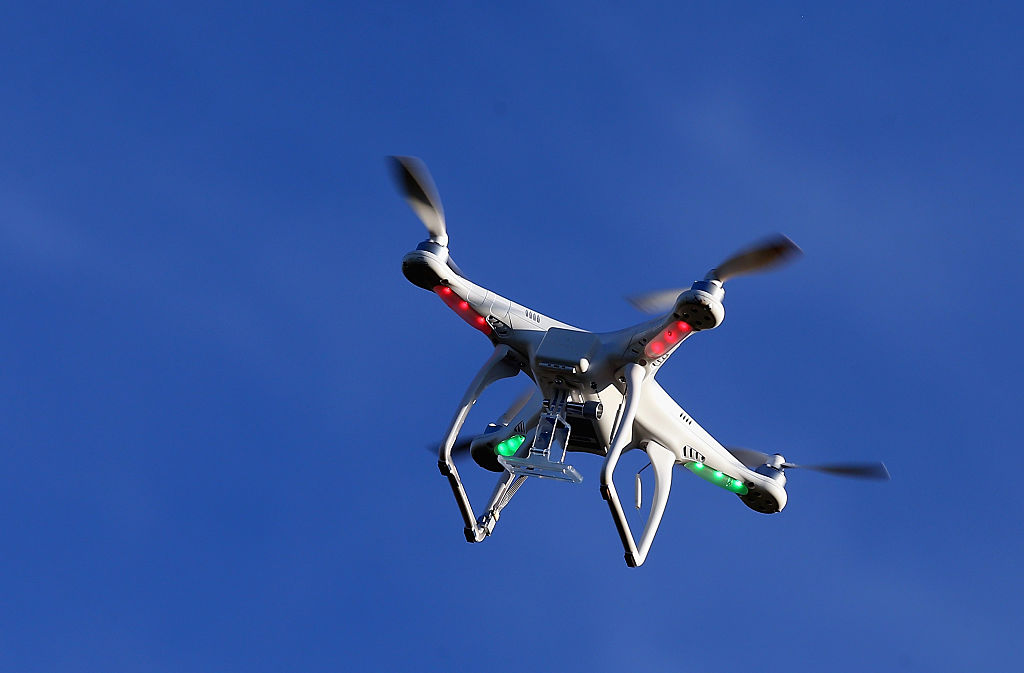In a propaganda video entitled “Empowerment Generation,” terrorists with Islamic State West Africa Province show scenes from a training camp in northeastern Nigeria. The video includes aerial views filmed using off-the-shelf quadcopter drones.
Unmanned aerial systems (UAS), known as drones, have become indispensable tools for government troops and terrorist groups across Africa due to their low cost, ease of operation and payload flexibility.
Although terrorist groups are increasingly weaponizing drones in kamikaze-style attacks against enemy targets, they also are using them to create propaganda videos for recruitment.
Rather than dive-bomb a target, some drones hover above the battlefield, capturing footage that is edited into slickly produced videos distributed across social media. In that way, drones again have leveled the battlefield for terrorists, this time by creating an image among potential recruits that terrorist groups such as ISWAP, Jama’at Nusrat al-Islam wal-Muslimin and al-Shabaab are powerful and influential.
“The mere claim to be using UAS sends a significant psychological message,” analyst Karen Allen wrote recently for the South Africa-based Institute for Security Studies. “Communication tools and visual imagery have major symbolic value.”
The new style of terrorist propaganda is heavy on action, including sweeping drone shots of terrorist forces on the move. They’re also light on the lengthy lectures that were terrorist video staples a generation ago.
The Islamic State group, widely known as ISIS, adopted drone technology for propaganda purposes early. Since its founding in Syria and Iraq a decade ago, the terror group has become well known for its ability to create propaganda videos. Those skills have spread to Africa as the group seeks footholds on the continent.
“ISIS’s use of drones distinguishes itself from other state and non-state uses of drones primarily by its communicative and symbolic value,” researchers Emil Archambault and Yannick Veilleux-Lepage wrote in a 2020 article published in the journal International Affairs.
ISIS’s use of drones to film car-bomb attacks between 2016 and 2018 gave them a strategic advantage over other groups by demonstrating their aerial superiority — a power, until then, held entirely by government forces.
Spreading images that show ISIS’s control of its airspace, and, by extension, the territory below, did more to promote the group to potential recruits than military use of drones, Archambault and Veilleux-Lepage wrote.
Using drones for propaganda is an extension of terrorists’ original tactic of using them for intelligence, reconnaissance and surveillance purposes. The onboard cameras that guide weaponized drones to their targets double as propaganda vehicles when they record attacks.
“Propaganda videos disseminated through drones serve not only as a tool for recruitment but also to demonstrate technological prowess, enhancing the groups’ perceived legitimacy and power,” Francis Okpaleke wrote in 2024 for the Global Network on Extremism and Technology.
In recent years, terrorist groups across Africa have expanded on ISIS’s experience in the Middle East by using low-cost drones to drive their own propaganda.
A recent social media video by Mali’s Azawad Liberation Front showed a fighter operating a vertical take-off drone to demonstrate its capabilities in a fight with the Malian government.
Tools such as off-the-shelf drones, combined with inexpensive editing software, artificial intelligence, and free social media accounts such as TikTok, have made it nearly impossible to quash terrorist propaganda, experts say.
“Jihadists realized that to capture the minds of young people, they need to speak to them in the language they understand — instead of the traditional didactic and demagogic styles that are boring and unattractive to them,” Saddiku Muhammad, a former Nigerian jihadist fighter, told Agence France-Presse. “From all indications, it is paying off.”

